Belonging to the Arecaceae family, there are over 2500 different types of palm trees. Obviously, we can’t go over each and every single one of these species, especially when you consider the fact that there are shrub palms, vining palms, and the iconic palm tree. However, you can easily find a palm tree that works well in your backyard landscaping or garden project using this comprehensive list.
If you are wondering about all of the different types of palm trees, let’s take a look at what these tropical fronds have to offer!
Types of Palm Trees: Dwarf vs Standard

There are over 2500 different types of palm trees.
©iStock.com/Infografick
While you can divide palm trees into many different categories and species, choosing between a dwarf or standard-sized palm is a good place to start if you want to plant one in your own backyard. Here are the characteristics of both standard and dwarf-sized palm trees.
Dwarf Palm Tree Characteristics
The average dwarf palm tree is under 20 feet tall and can grow using a single large trunk or multiple clustered trunks. Depending on which appearance you like more, dwarf palm trees are ideally used as statement trees in a smaller garden or as shrubs or hedges if you choose the clustered style of the palm tree.
Standard Palm Tree Characteristics
For the most part, any other palm tree that is over 20 feet tall is considered a standard palm. However, it can still have a single large trunk or many smaller trunks, clustered together. For example, the iconic coconut tree would be considered a standard palm tree. The fronds or leaves also grow quite large on standard palms.
The Most Common and Popular Types of Palm Trees
Whether you want to learn more about the subtropical trees in your neighborhood or you want to plant one yourself, here are some of the most popular and common types of palm trees to check out.
Coconut Palm
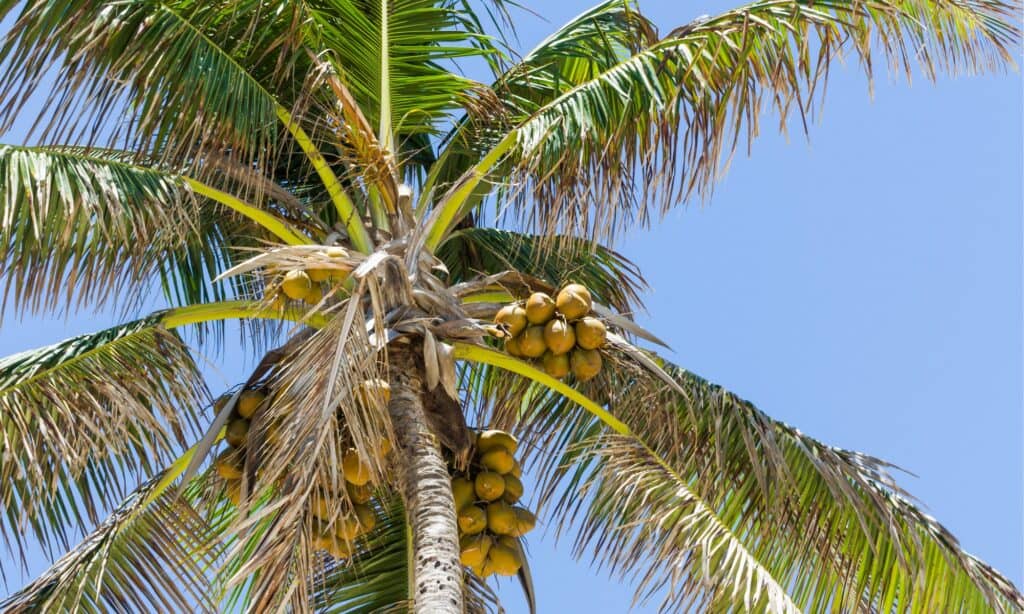
Coconut trees thrive in sandy soil.
©iStock.com/Thiago Santos
Classified as Cocos nucifera, the coconut tree is an undeniable palm tree family member. An ancient tree dating back to prehistoric times, coconut trees are revered and highly valued to this day for many different products, including fibers and culinary uses. However, coconut trees require a high level of humidity and moisture as well as sandy soil in order to survive, so you may not be able to grow them in the average backyard.
Date Palm

The history of the date palm is storied and important.
©Protasov AN/Shutterstock.com
Native to the Middle East and Africa as well as some parts of Asia, the date palm is another ancient and iconic palm tree. Valued for its edible dates, the date palm thrives in tropical regions and remains an important resource and food commodity to this day.
Foxtail Palm

Now widely cultivated, foxtail palms originated in one very specific location in Australia.
©Supanee Prajunthong/Shutterstock.com
Attractive and recently introduced to the rest of the world in the late 70s, foxtail palms are native to a very specific region of Australia. After a longtime struggle with poaching and illegal seed harvesting, the foxtail palm is now considered one of the most popular ornamental palms out there now that it’s safely and legally propagated.
Cat Palm
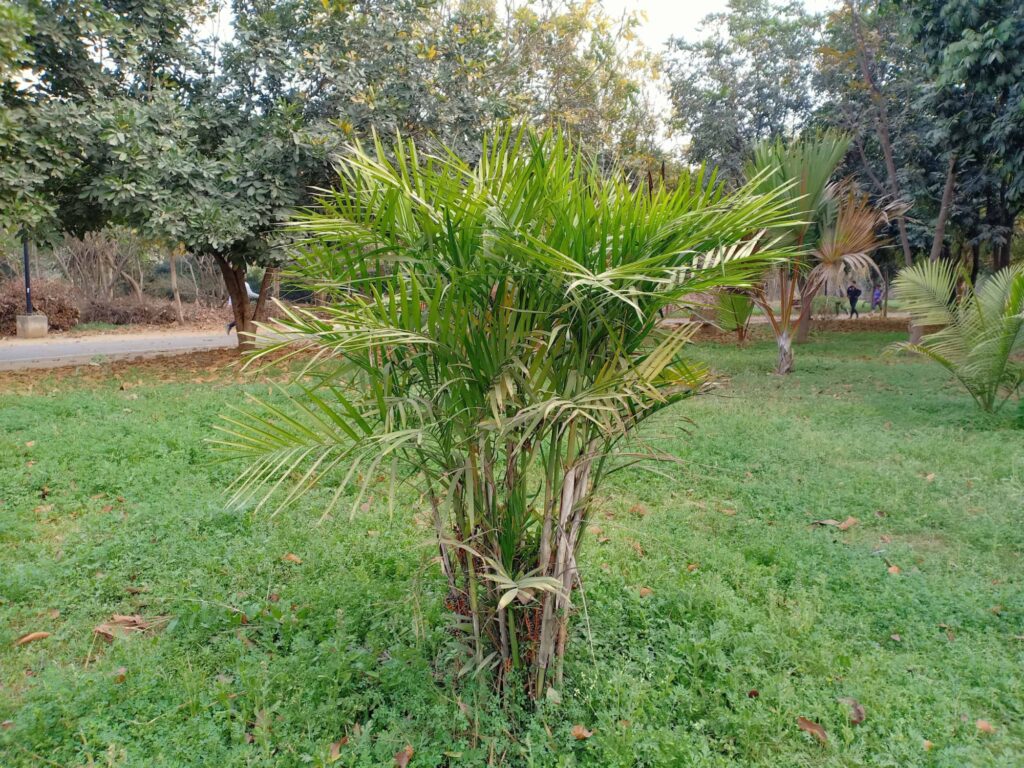
The cat palm can be cultivated as a houseplant.
©Vipul1989/Shutterstock.com
Also known as the cascade palm, the cat palm is an incredibly popular dwarf palm variety. It only reaches 7 feet tall outside and up to 4 feet tall when grown indoors, and it is typically cultivated as a houseplant. These palms love moist soil and plenty of sunlight, growing with many clustered trunks.
European Fan Palm
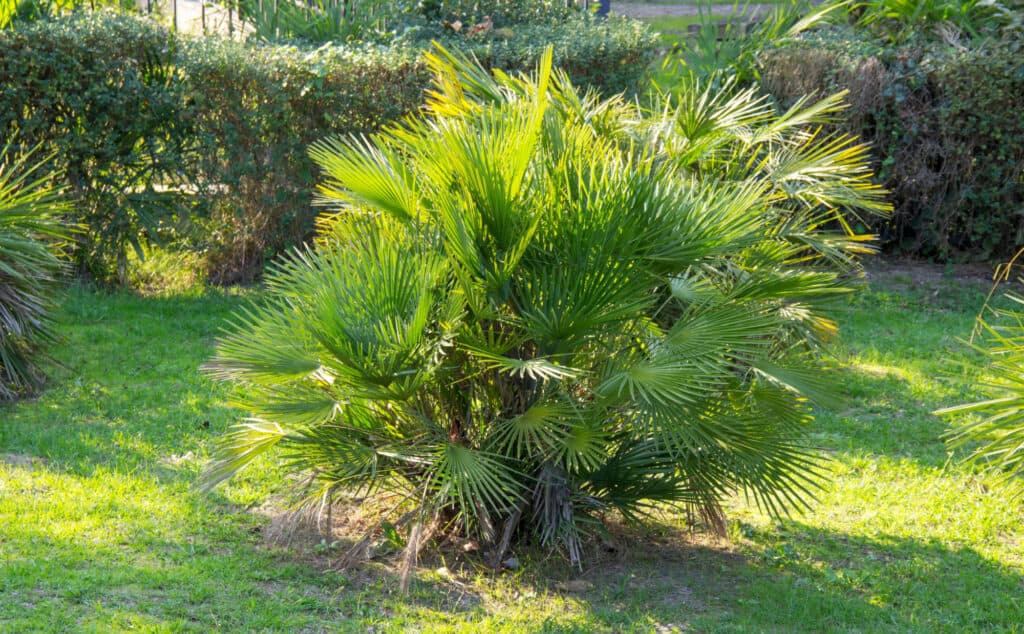
Compact and cold-hardy, the European fan palm is wildly popular.
©ToKa74/Shutterstock.com
The phrase “fan palm” technically applies to any palm tree with a flat, fan-shaped leaf or fronds. Amongst the various different types of fan palms, the European fan palm is highly prized for its compact growth, attractive appearance, and overall ability to grow in temperate regions. These trees reach up to 20 feet tall and are quite shapely, thriving in drought conditions and some level of frost.
Pindo Palm
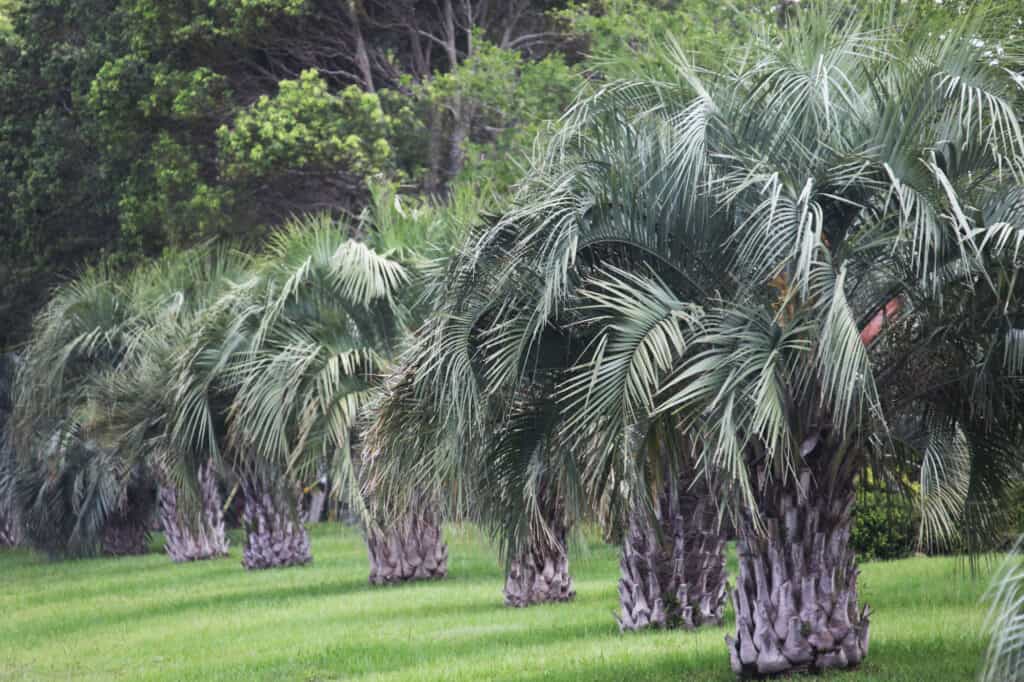
The pindo palm is also called the jelly palm.
©Natalya Chernyavskaya/Shutterstock.com
Native to Brazil but thriving in the Mediterranean and Southern United States as an ornamental tree, the pindo palm is widely popular for its thick trunk and feathery fronds. These trees can occasionally reach 100 feet tall but this is rare, as they are slow-growers that thrive in high humidity.
Majesty Palm

Majesty palms require regular fertilization, usually once or twice during the growing season.
©Pixelbender36/Shutterstock.com
Typically labeled as a houseplant, the majestic or majesty palm is actually capable of growing much larger when planted in an outdoor environment. In fact, majestic palms are difficult to grow inside, preferring the sunlight and humidity levels that a natural outdoor environment can offer. They grow on a single large trunk in an attractive white shade.
King Palm

The average king palm produces a trunk in a silvery hue.
©Sve_M/Shutterstock.com
The king palm or Alexandra palm is famous for its beautiful flowers and ability to thrive in flooded conditions. Native to Australia, this palm tree has also been naturalized in Hawaii, thriving in moist and rainy conditions where other plants cannot take root. The fronds are feathery and graceful as well.
Sabal Palmetto Palm

The Sabal palmetto palm is one of the most widely distributed and cultivated palm varieties.
©lazyllama/Shutterstock.com
Known as the official state tree of Florida, the Sabal palmetto palm is one of the most cold-tolerant and hardy palm trees known to man. It thrives in salty conditions and can grow outdoors without any winter protection in most southern states as well as up both coastlines. It is likely a palm tree you have seen before given its wide distribution.
Needle Palm

If you need a cold-tolerant palm tree, check out the needle palm.
©Sanyawadee/Shutterstock.com
Speaking of cold tolerance, the needle palm is one of the most frost-resistant palms available for the modern homeowner or landscaper. It can safely it over winter as low as -5 degrees Fahrenheit, but be sure that your location has especially hot summers, as these will be key to the overall survival of your needle palm. These palm trees also only reach 10 feet tall and have spiky, ornamental foliage.
Areca Palm
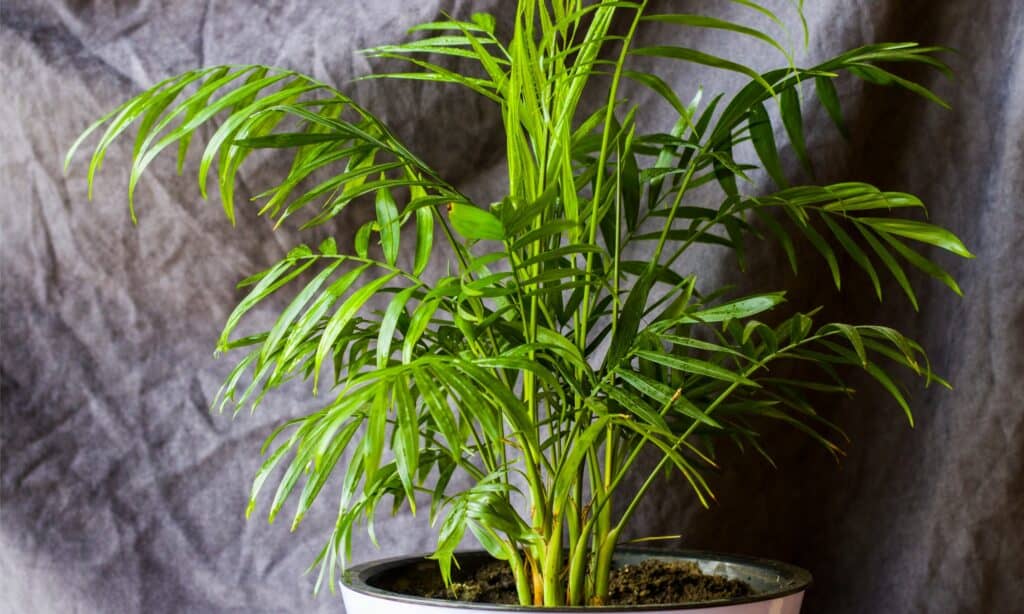
You can grow an areca palm indoors.
©iStock.com/Tamar Dundua
Areca palms come in many shapes and sizes, but they are a common enough palm tree to grow indoors. In fact, these palms are popular in indoor interior design, but you can also grow them in subtropical environments. Also known as areca nut palms, some areca palms produce a nut that has slightly addictive qualities.
Triangle Palm
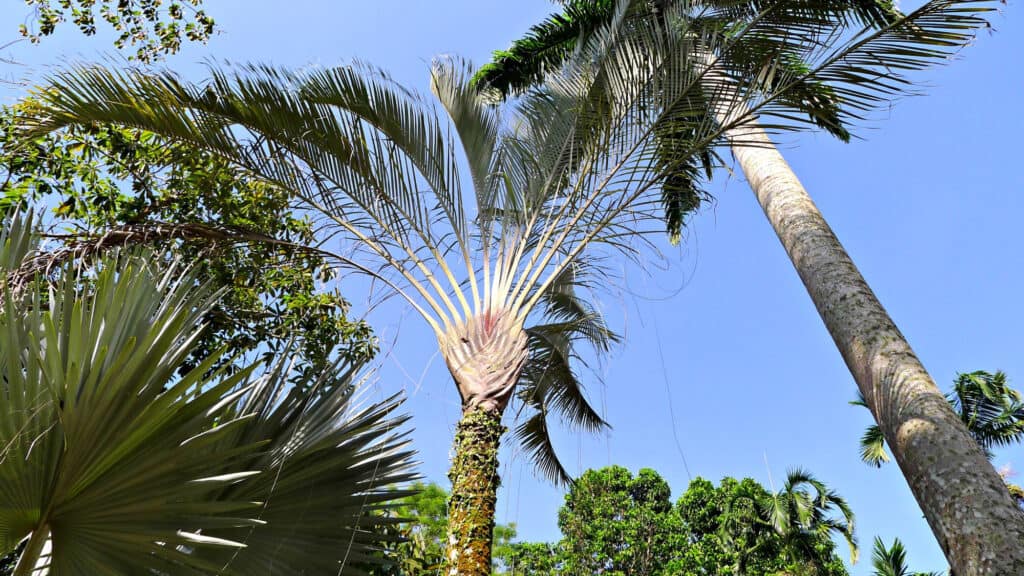
The triangle palm is native to Madagascar.
©thecloudysunny/Shutterstock.com
Classified as Dypsis decaryi, the triangle palm is native to Madagascar. It has been widely cultivated in a variety of areas around the world, but it is in fact endangered in Madagascar. However, the triangle palm is revered as an ornamental tree given its beautiful flowers and leaves, thriving in well-draining soil and full sunlight.
Spindle Palm
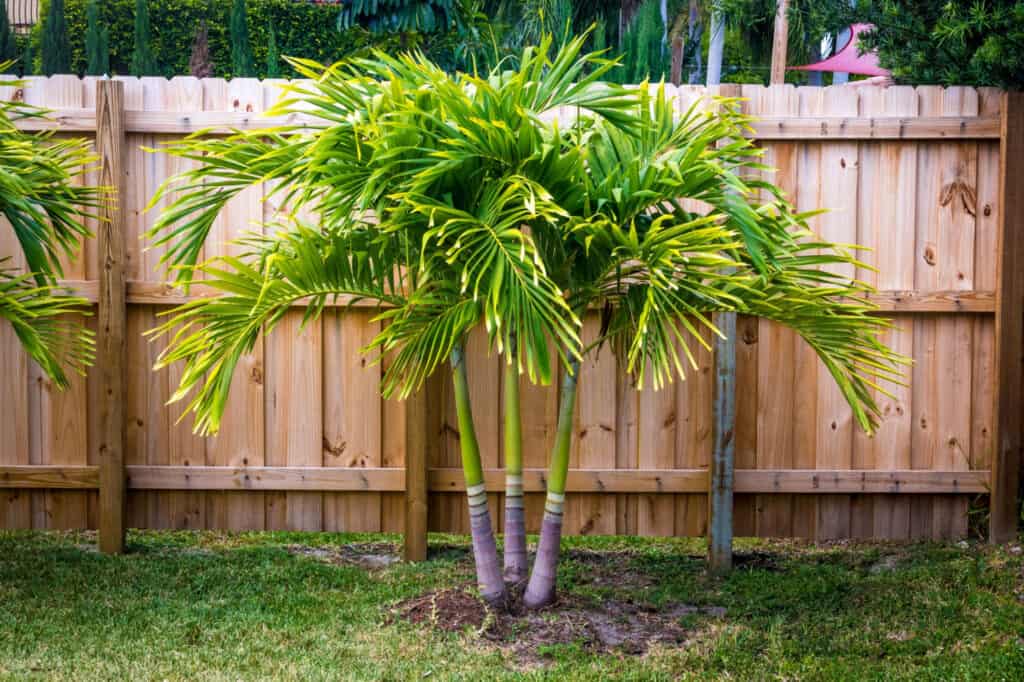
Make sure your spindle palm stays warm, as it has very little cold tolerance.
©julie deshaies/Shutterstock.com
If you live in the right location, a spindle palm could be a great addition to your landscaping or patio decor. You can grow this palm tree in a container or in the ground, but this tree is incredibly cold-sensitive and could die if exposed to temperatures lower than 40 degrees Fahrenheit. The spindle palm has a large trunk and beautiful feathery fronds, making it a popular ornamental palm tree.
Zombie Palm
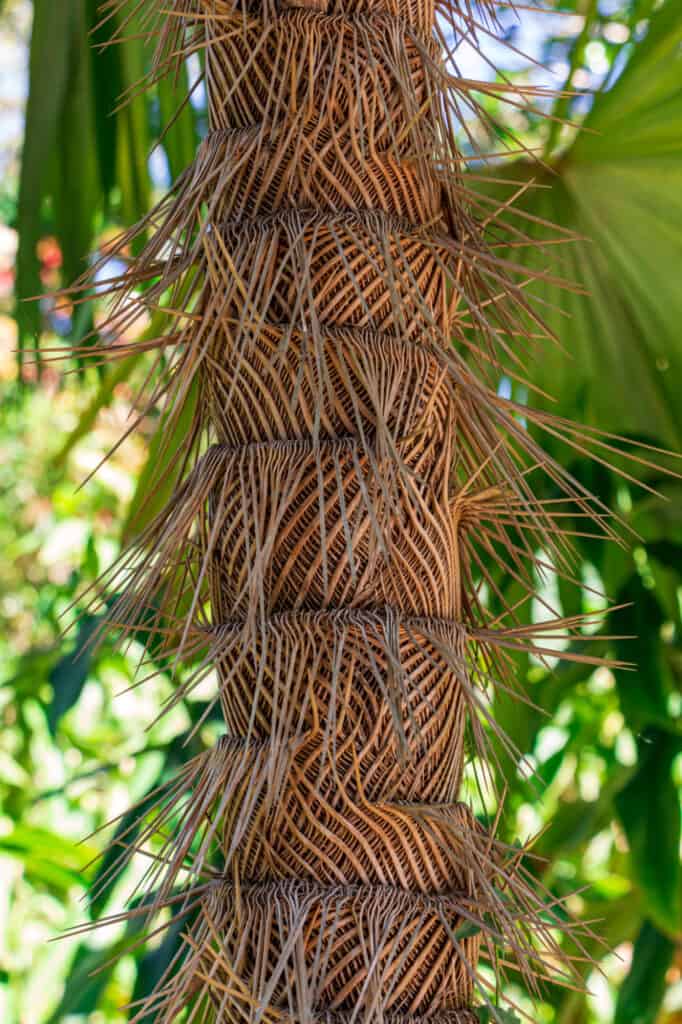
Zombie palms are prized for their unique trunks.
©Sunshower Shots/Shutterstock.com
Reaching up to 10 feet tall and producing multiple spiny leaves up and down its clumping trunks, the zombie palm is a great palm tree if you don’t want to have to worry about taking care of it. When grown in regions such as Florida, the zombie palm thrives in salty air and doesn’t need much maintenance overall.
Florida Thatch Palm
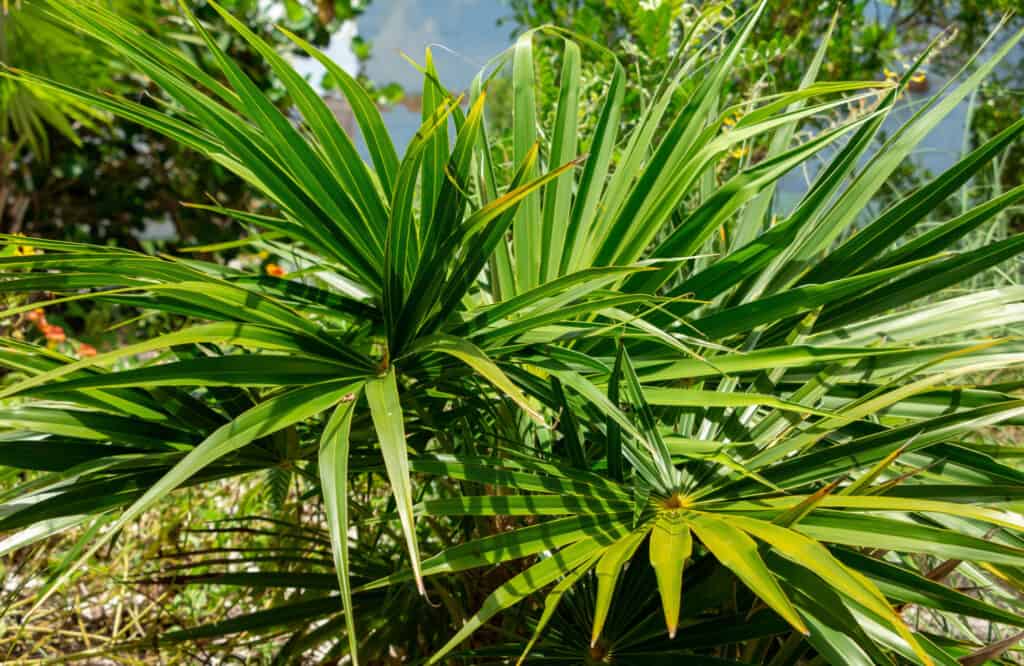
Most Florida thatch palms never grow taller than 20 feet.
©Sunshower Shots/Shutterstock.com
With a narrow trunk that appears as if its leaves sprout from nowhere, the Florida thatch palm is incredibly popular for its wind resistance and salt tolerance. Like most palm trees, this particular palm can’t grow outside of hardiness zones 10 through 11, but it only reaches 20 feet tall and is considered a very attractive ornamental palm tree.
Windmill Palm

The windmill palm is native to China and Japan.
©rSnapshotPhotos/Shutterstock.com
If you are looking for a more cold-tolerant palm tree than average, the windmill palm is capable of growing along the Pacific Northwest coastline. Native to China and Japan, this single-trunked palm tree reaches an average of 50-80 feet tall, with wide fan palm fronds swaying in the breezes.
Up Next
- Discover the 11 Different Types of Spruce Trees
- The 10 Largest Trees in the World
- The Different Types of Evergreen Trees
- Discover the Tallest Palm Tree in the World (It’s NOT in Florida!)
The photo featured at the top of this post is © Protasov AN/Shutterstock.com
Sources
- Areca Nut Chewing: Initiation, Addiction, and Harmful Effects Emphasizing the Barriers and Importance of Cessation, Available here: https://www.hindawi.com/journals/jad/2021/9967097/
Thank you for reading! Have some feedback for us? Contact the AZ Animals editorial team.







